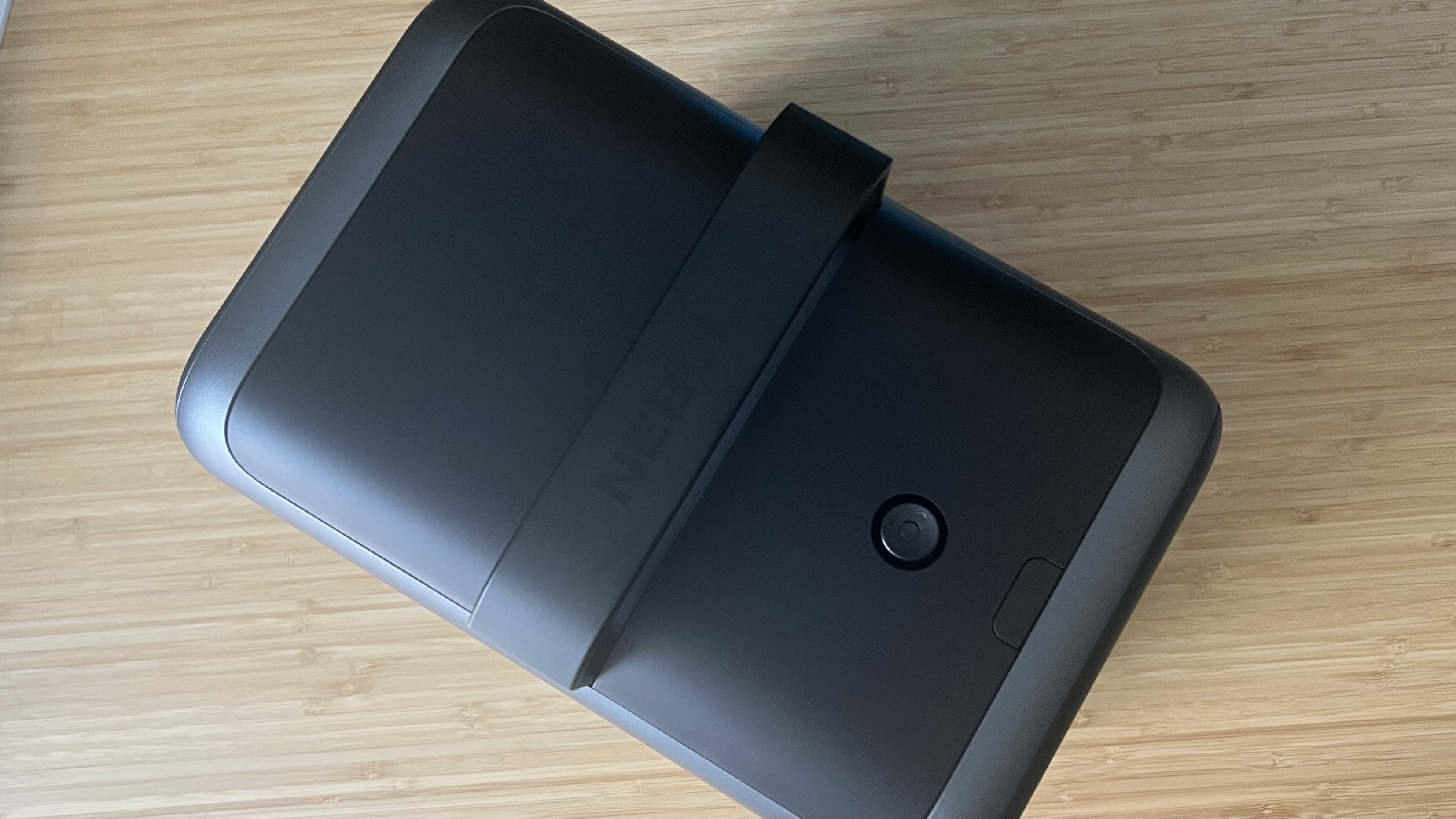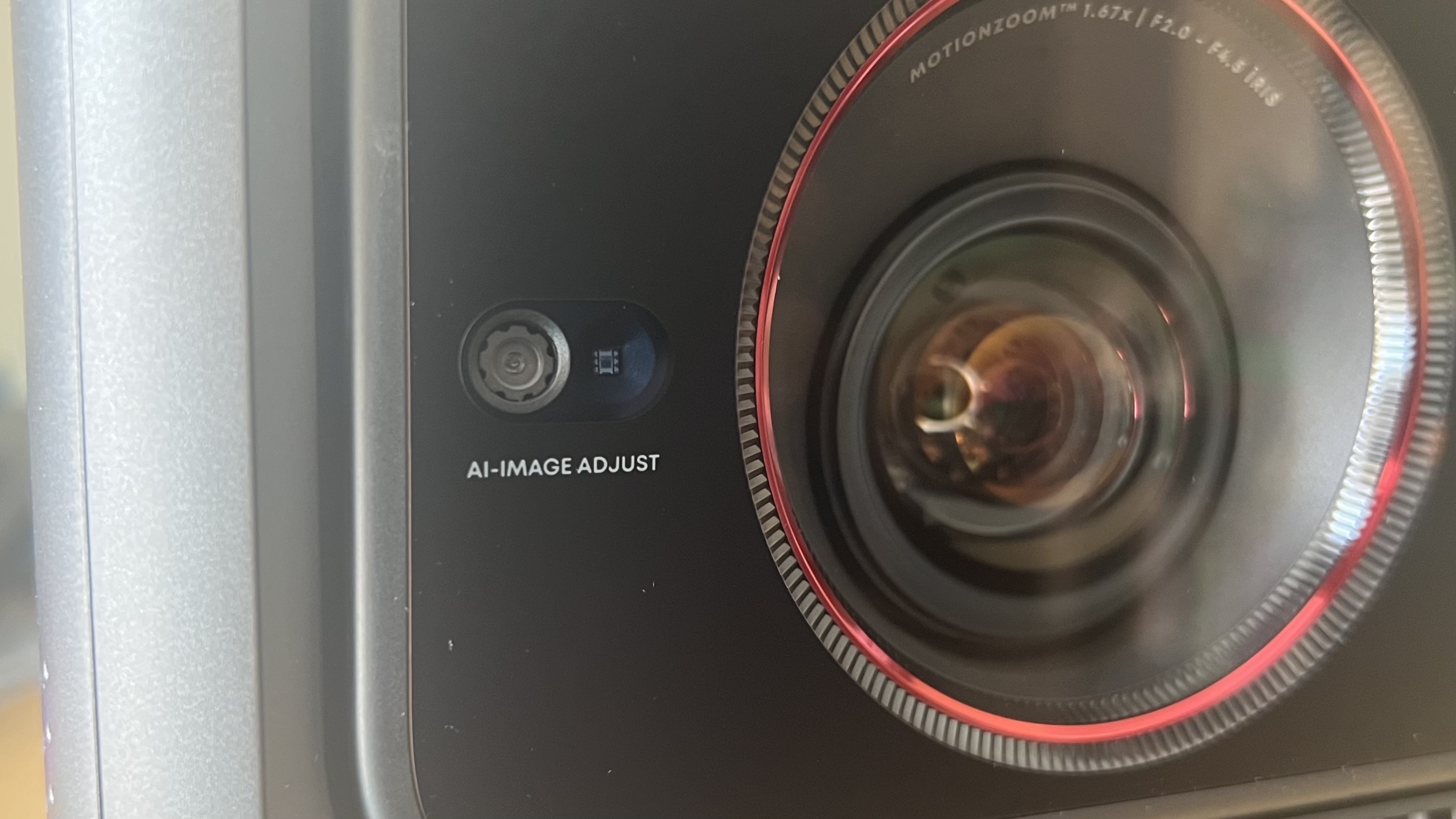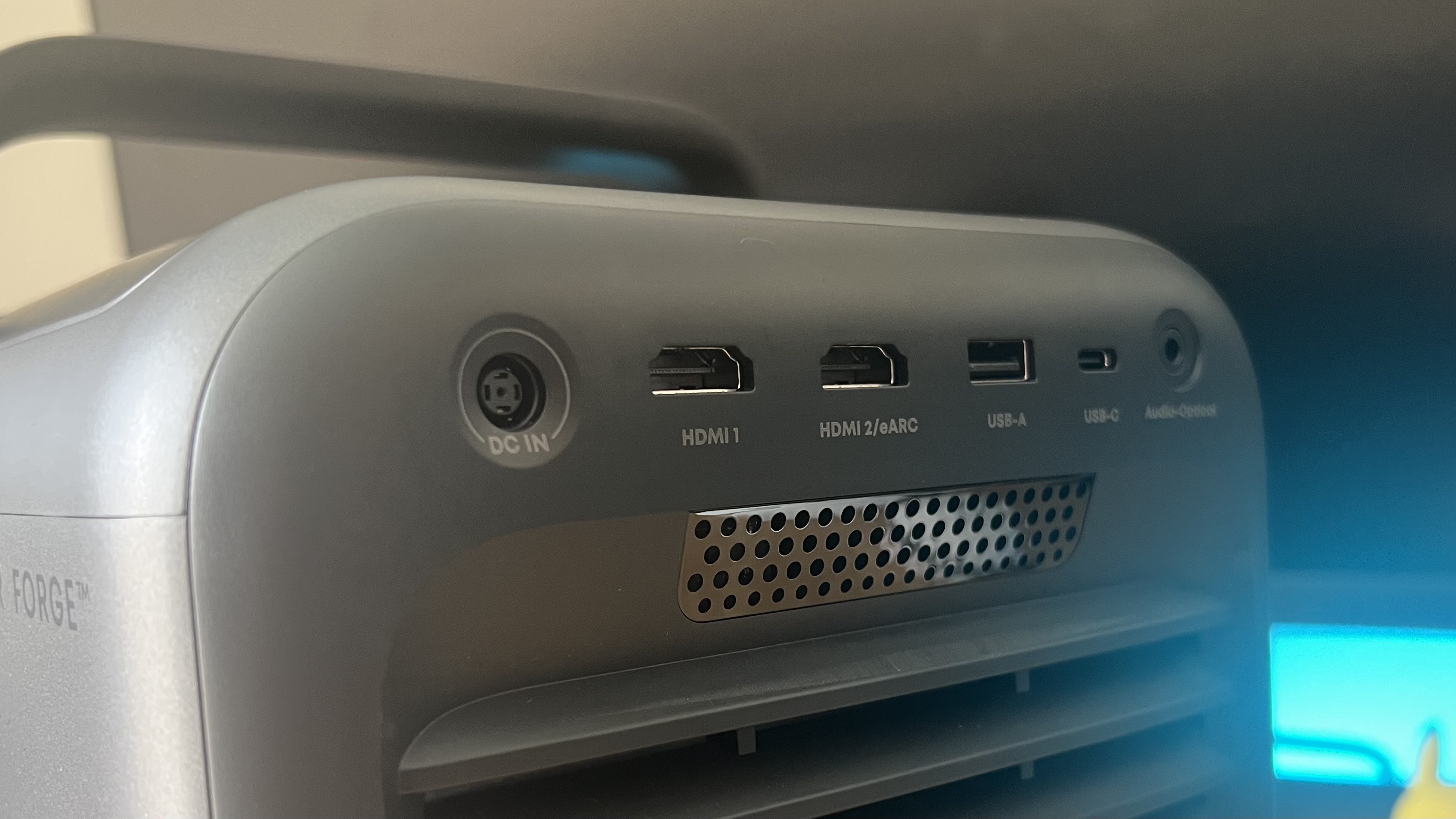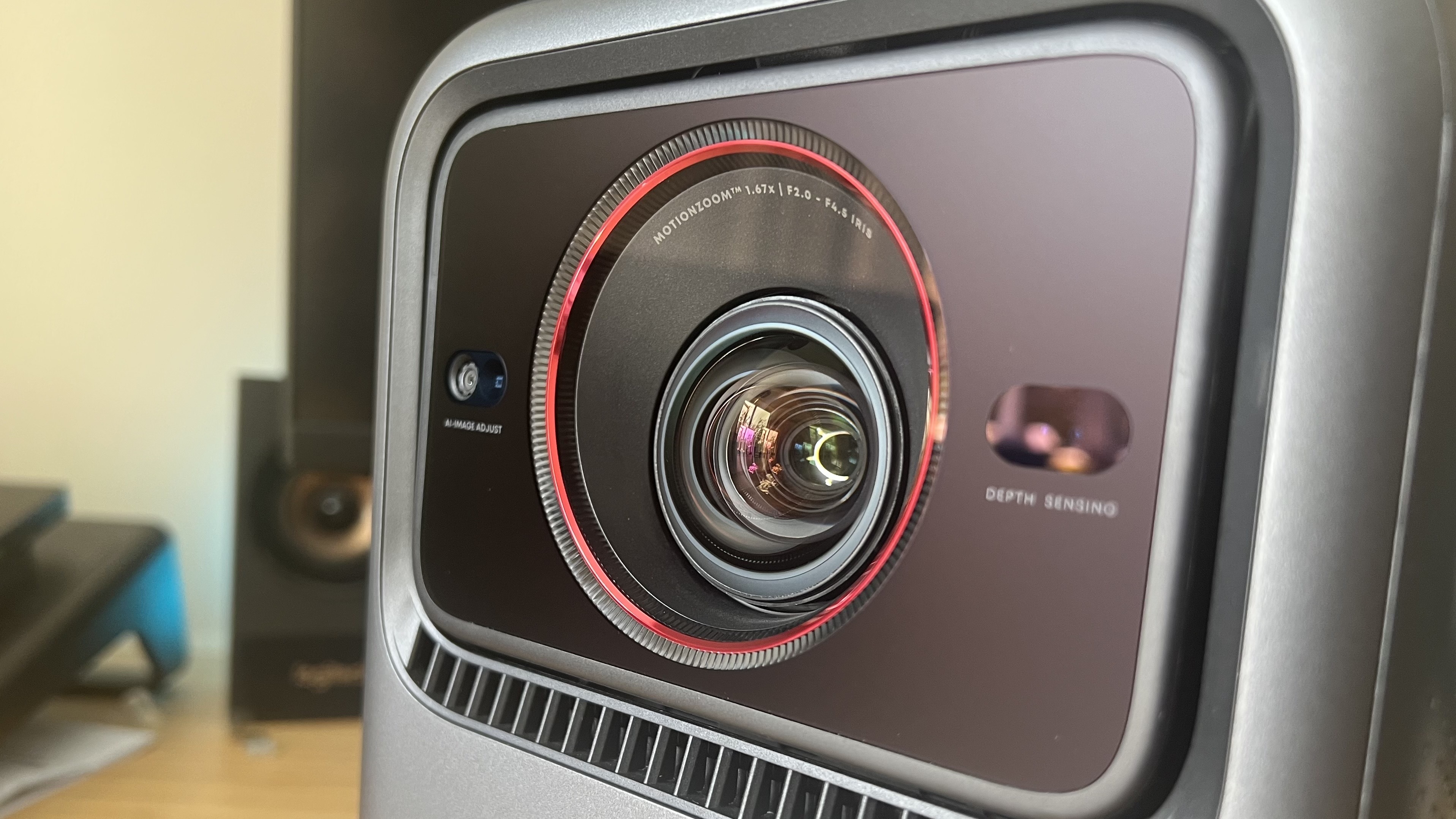
I thought I’d be writing my Anker Nebula X1 review all about the unique liquid cooling components under the hood, but it’s the sound that has me excited about this brand’s latest portable projector. Sure, that thermal system means the entire 4K projector runs whisper-quiet, but the power and texture of this audio means we might have never needed it in the first place.
While it’s too big and bulky to truly be considered an outdoor thrower, the Anker Nebula X1 certainly has the chops to become one of the best projectors on the market overall. The brand claims it’s the “world’s first cinema-grade 4K triple-laser” device - pretty bold considering its $2,999 / £2,199 price tag puts it in direct competition with more traditional models like the BenQ X3100i. This is a real treat for the senses - just don’t get the wrong impression from that ‘portable’ moniker.
Price |
$2,999 / £2,199 |
Brightness |
3,500 ANSI Lumens |
Resolution |
4K |
Light source |
Triple Laser |
Throw ratio |
0.19 - 1.5:1 |
HDR |
Dolby Vision |
Image size |
Up to 300-inch |
Audio |
4x side-firing speakers (2x 15W, 2x 5W) |
Ports |
2x HDMI 2.1, 1x USB-A, 1x USB-C, audio-optical |
Dimensions |
11.1 × 7.3 × 9.7 inch |
Weight |
13.7lbs (6.2kg) |
Design

If you’ve been following Anker’s previous projectors you’ll be familiar with this design. The Anker Nebula X1 keeps in step with previous Cosmos and Nebula devices, with its boxy form factor, long body, and WALL-E-esque laser face at the front. A small handle emerging from the top assures you that this is supposed to be portable, but the 6.2kg weight and 24 x 19 x 28 cm dimensions mean it’s only really comfortable being hauled from room to room. I’m certainly not knocking that definition, but it might not be the rugged outdoor center-piece many were asking of it.

A matte-finished gray body keeps things looking streamlined, though, accompanied by a small nubbin for easy-access controls up top. A large set of grills takes up almost the entire back panel, with a neat array of ports running along the top. This rear port placement means it’s easy to keep cables out of the way if set up on a back shelf, as long as your consoles can be plugged in nearby. I set mine up on a coffee table with my PS5 behind me, and had to manage two cables - the norm for a projector designed to be moved around.
The entire chassis feels sturdy and reliable, with no flexing to the main body and neat joinery around the edges. Ports remain steadfast against any wiggling either around the edges or inside the housing itself, and the handle is solidly connected to the main device. I trust this plastic grabber with the full weight of the projector.
Features
Onto the thermals. I’ll confess, it’s this liquid cooling that had me so intrigued about the Anker Nebula X1 in the first place. It’s a feature more readily applied to the best gaming PCs than the world of home theatres, but one that makes perfect sense considering how loud some 4K projectors can rev.
I was excited to find out if this was a gimmick - it most certainly is not.
I was shocked when the Anker Nebula X1 simply purred to life, running super-bright picture with a range of different AI processes ticking away in the background and not even breaking a sweat. I usually have to reach for gaming headset when playing with a projector in close quarters, but I was easily able to enjoy my games with the Nebula’s audio firing instead. Compared to louder models like the BenQ X3100i, this is a revelation.
You don’t buy a $3,000 projector for the cooling, though. The Anker Nebula X1 is outfitted with triple lasers, 4K resolution picture, up to 3,500 ANSI lumens brightness, and a 5,000:1 contrast ratio. That’s all topped off with Dolby Vision HDR, AI Spatial Adaptation, and Spatial Recall.

Those last two make for one of the easiest setup experiences I’ve ever had. I go through my fair share of projectors and each one seems to react differently to my favorite screens, sheets, and walls. The Anker Nebula X1 just works.
The AI Spatial Adaptation essentially learns everything it can about its environment and adjusts your picture immediately. That means automatic focus and keystoning as well as ambient light and wall color correction. Vertical lens shift who? The entire damn projector is seated on a gimbal that automatically finds your screen and adjusts your picture accordingly.
That’s smart by itself, and it all worked perfectly for me first time. Moving to another spot allows the Spatial Recall to go to work. The system will remember your settings for every environment, which means you can simply pick up and play wherever you need it. That’s easier said than done considering the size, weight, and power connector, and it doesn’t feature the USB-C gaming versatility of the sadly discontinued BenQ X300G, but it’s impressive for streaming nonetheless.
I found these AI tricks to be worth their salt. My initial setup was incredibly fast, with the system setting up accurately and quickly the first time. That’s far from true across the market as a whole - I’m normally fiddling with keystone and focus settings for the first hour or so of testing time.

Two HDMI 2.1 ports may have those looking for the best projector for PS5 and Xbox Series X excited, but alas, the Anker Nebula X1 only offers 4K resolution at 60Hz. That’s still on par with the vast majority of projectors in the gaming space at the moment, though I did notice input speeds suffered during faster titles. You’re still better off with BenQ’s flagship (the X3100i) if you’re going all in on a console setup.
The Nebula X1 uses four internal speakers firing out to the sides, a pair of 15W woofers and 5W tweeters, a formidable setup that offers a richly textured bass while still keeping space for punchy dialogue and sweeping soundtracks in the soundstage. Dunkirk’s artillery shells have a far greater presence than I’ve ever experienced before, and its explosions pack a power rarely heard from a projector of this size.
That’s all before I connected the optional extras. The Nebula X1 can also be configured with a set of wireless speakers (connected via WiFi). I’m not here to review the speakers, but if you do invest in the projector, they’re worth keeping on your radar. They double down on already-excellent sound with a much wider soundstage, separating the lows and highs perfectly to create a far more immersive experience overall. And hey, they come with a karaoke mic.
So what’s missing from other models? Honestly, not much. This is pacing evenly with the BenQ X3100i from a feature perspective (minus that speaker setup), and the slightly cheaper XGIMI Horizon Ultra operates on a lower-level LED and laser system without those fancier setup features. The only real sacrifices here are for gamers, with lower latencies noticeable compared to BenQ’s device and a lack of dedicated settings support for various games.
Like both of these devices, though unlike budget outdoor options like the Yaber T2 Plus, the Anker Nebula X1 doesn’t have an inbuilt battery. That’s another thorn in the side of those backyard plans all Anker’s marketing may lead us to make.
Performance
The Anker Nebula X1 sounds great so far, so what’s the catch? After running through my usual roster of HDR and SDR movies, I’m not sure. There’s a little more rainbow effect than I’ve seen in the past. Sharpness levels sometimes need to be reined in. Blue tones can dominate the picture in certain presets.
These nitpicks certainly aren’t enough to discount the overall image quality when the Anker Nebula X1 is giving me some of the finest details, smartest brightness handling, and richest landscapes I’ve seen at this price level. Dunkirk’s grays and browns are tough for any projector to show off with, but even the most monochrome of scenes benefits from the clarity and texture on offer here.
Then I throw on PS5’s Astro Bot and the scene is ablaze with crisply defined, vibrant color, excellently balanced for both saturation and warmth.

That all came once I’d tinkered with the settings, though. Straight out of the box I was a little disappointed with the built-in picture presets. There are nine main modes to choose from, but call me Goldilocks because none of them seemed to feel just right. NebulaMaster is the brand’s own brainchild, concocted to boost contrast while also maintaining finer details. That’s all it does, though, which means the final result feels over-saturated and almost clinical in its approach. I missed the depth of Joker’s cinematic storytelling and the power of Godzilla: Minus One’s wide-scale scenery. It did, however, present a fantastic look at that monster itself, with excellent detailing carrying across both faster and foreboding moments.
Standard, Vivid, Day, Night, and Sports modes all offer a similar image overall, but sometimes drop detail for color highlights or undersaturate the picture entirely to maintain brightness levels. I found the best results in Movie mode, which offers a nice sense of warmth while only dropping a little of the darker details and maintaining color tonality particularly well.
Should you buy the Anker Nebula X1?

The Anker Nebula X1 comes in at a similar price to the BenQ X3100i and while gamers are going to prefer BenQ for its lower-latency gaming and additional PS5-friendly preset apps, those hunting down a 4K projector for streaming are going to be nicely at home here. I’d even consider splurging for it over the $1,699 XGIMI Horizon Ultra if you’ve got the space.
While it offers the same base specs as XGIMI’s cheaper model, the additional brightness and excellent image quality make for a vastly superior experience - especially with that audio hooked up. Let’s not forget the very reason I was keen to get the Anker Nebula X1 either, it’s much quieter overall.
Versatility |
4/5 |
Ease of use |
5/5 |
Compatibility |
4/5 |
Build quality |
5/5 |
Picture quality |
4/5 |
Brightness |
5/5 |
How I tested the Anker Nebula X1
I streamed my usual roster of 4K Blu-Ray candidates in HDR on the Anker Nebula X1 (via the PS5), running through Joker and Dunkirk on the system while also watching Glass Onion, Titan: The OceanGate Submersible Disaster, The Super Mario Bros. Movie, and Godzilla: Minus One in HDR on Netflix. I also tested across SDR content, enjoying a few healthy episodes of The Office before turning to more serious matters with Dexter in SDR.
I also played a range of titles on PS5, including Horizon Zero Dawn Remastered, Astro Bot, Assassin’s Creed Mirage, and The Last of Us Part 2. I used the Anker Nebula X1’s own inbuilt speakers primarily, with a few sessions running with the additional speaker pack as well.
For more information on how we test projectors, check out the full GamesRadar+ Hardware Policy.
We've also got our eyes on the best gaming TVs and best gaming monitors on the market. Or, take a look at the best 120Hz 4K TVs for something a little speedier.







